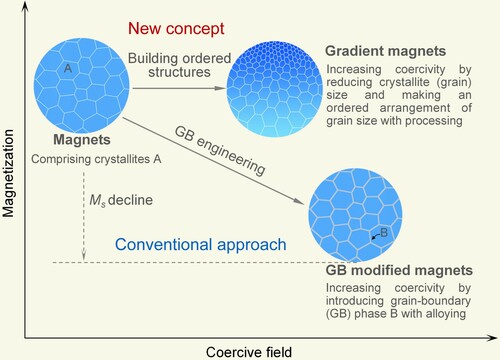Figures & data

Figure 1. Engineering strong magnets with ordered structures. The coercive field (coercivity) of permanent-magnet materials is generally enhanced by introducing grain-boundary (GB) phase with alloying at the expense of magnetization. Building ordered structures, e.g. spatial gradient in fine grain sizes with processing techniques can increase coercivity without sacrificing magnetization, making magnets strong and sustainable due to less use of alloying content and/or critical elements.

Figure 2. Fabrication of gradient nanostructures. Grain-size gradient is achieved by solidifying alloy melt with temperature gradient using the melt-spinning (MS) technique. The temperature gradient between the free side (FS) and the cooling side (CS) of MS ribbons (see the left panel) yields a gradual decrease in grain size from the FS to the CS, i.e. grain-size gradient.

